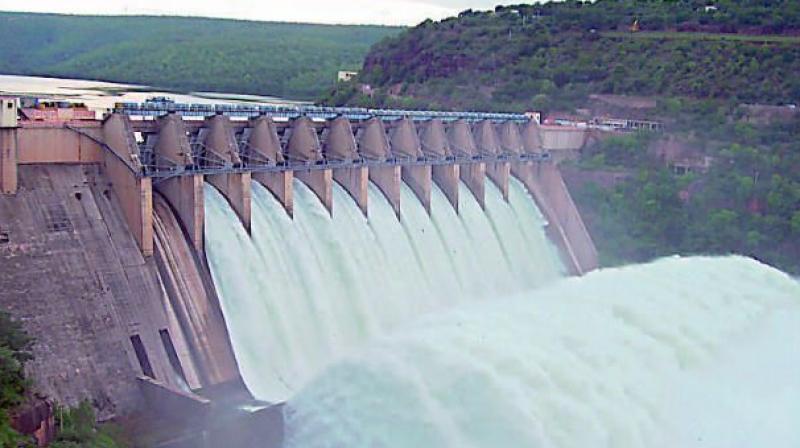AP seeks KRMB's allocation of 132tmc-ft of Krishna water
State water resources authorities are seeking an allocation of 132 tmc-ft of water from the Nagarjuna Sagar Dam for AP. A letter will be addressed to the three-member KRMB committee to consider AP’s request for water allocation

Vijayawada: The Andhra Pradesh government is writing a letter to the Krishna River Management Board for allocation of 132tmc ft of Krishna river water from Nagarjuna Sagar Dam for Kharif crop cultivation in four districts.
With heavy rainfall being recorded in the upper catchment areas of Krishna river, an inflow of more than 4.6 lakh cusecs of water into the Srisailam Dam is expected. As the dam is getting filled up, the authorities are expecting the Nagarjuna Sagar dam to be full in a week or so.
This is on condition that the huge inflow of water from Srisailam Dam continues in the coming days.
State water resources authorities are seeking an allocation of 132 tmc-ft of water from the Nagarjuna Sagar Dam for AP. A letter will be addressed to the three-member KRMB committee to consider AP’s request for water allocation.
The state water resources authorities are of the opinion that once the KRMB allocates the specified quantum of water from the Nagarjuna Sagar dam, the Krishna water would flow through the Right Canal to parts of AP, covering districts like Palnadu, Guntur, Prakasam and Baptla.
This would help the farmers cultivate crops in about 15 lakh acres for the kharif season. Farmers need water for cultivation from August to March next year to raise crops.
Earlier, AP got its share of 4.5tmc-ft of water and sought an additional quantum of 3 tmc-ft. With this, so far, AP got 7.5tmc-ft of water from the Nagarjuna Sagar dam for cultivation of crops and also to meet the drinking water needs of the people.
The water resources authorities say that it would take a week to 10 days to fill the Nagarjuna Sagar dam. Once it is filed to the brim of FRL at 590ft, it can store neary 312tmc-ft of water for use by both AP and TG for purposes like generation of hydro-electric power, cultivation of crops and to meet the drinking water needs.
A senior official from the Nagarjuna Sagar Dam said, “We are writing to KRMB to allot 132tmc ft of water for AP mainly for cultivation of crops in four districts for the kharif season.”
